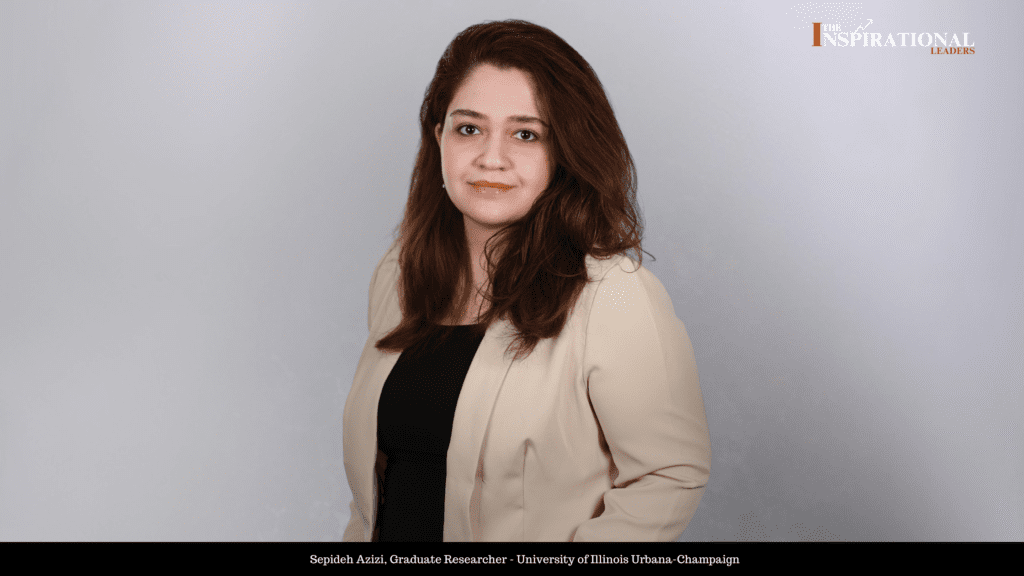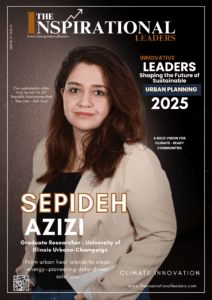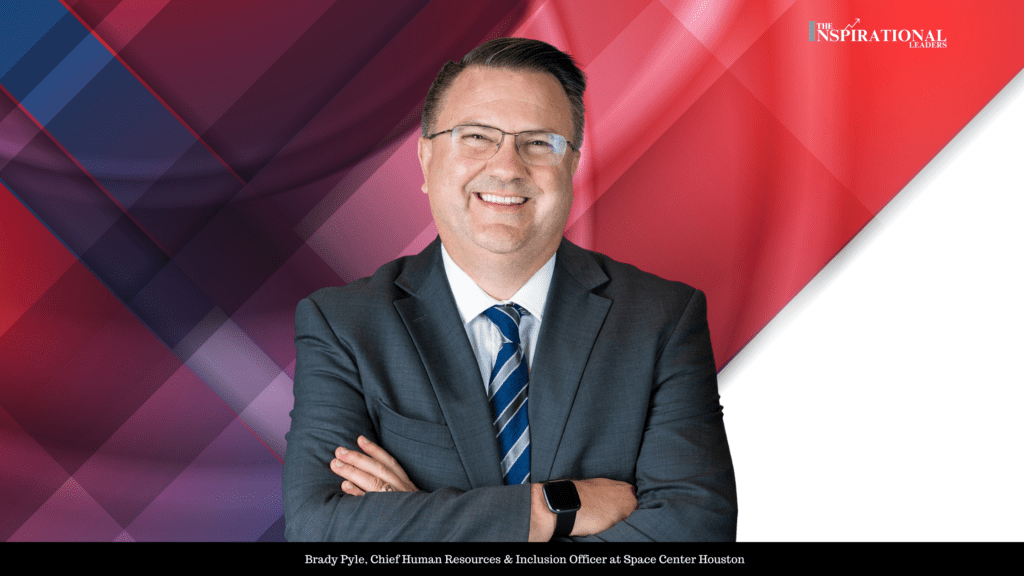Groundbreaking Sustainable Cities: Sepideh Azizi's Plan for Urban Resilience and Fairness
Urban planning has begun to change as cities around the world face two big problems: fast city growth and climate change. Sepideh Azizi, who studies and teaches at the University of Illinois Urbana-Champaign, leads this new direction. Azizi’s work aims to create sustainable cities. She connects research based on facts with real-life uses. This offers new ways to solve some of today’s biggest environmental and social issues.
Sustainability isn’t just a concept—it’s a responsibility. Cities must be built for both resilience and fairness, ensuring no community is left behind.
A Journey Grounded in Inquisitiveness and Toughness
Sepideh Azizi’s path to sustainable urban planning started with keen interest in city operations and a wish to tackle the environmental issues she saw while growing up in Iran. “I witnessed how extreme heat, water scarcity, and other climate-related problems had an impact on communities,” she remembers. “This early exposure pushed me to study urban planning with a heavy emphasis on sustainability.” Her academic and work experience has led her through various settings, from examining urban heat islands in major U.S. cities to evaluating flood risks and farm changes in Iran. Now, her studies at the University of Illinois Urbana-Champaign center on climate toughness clean energy shifts, and disaster prevention. “I’m drawn to how data, policy, and social fairness connect,” she says. “This is where I find the most meaning and satisfaction in my work.”
The Developments of Sustainability in Urban Planning
No longer an ideal, but increasingly a necessity, Azizi adds that cities must heed the integration of sustainable planning to tackle climate change, improve environmental justice and bolster quality of life, all the while finding that actualisation of these objectives is fraught with hurdles.
“One of the major obstacles is that sustainability needs to be equitable,” she says. “More often than not, green things-carrying renewable energy projects or even urban greening-benefit wealthier areas and leave lower income communities behind.” She adds that strong, political and financial barriers generally slow down the adoption of those sustainable policy initiatives. “Many cities have developed these robust, ambitious climate goals, but then don’t have the funding or political will to implement them at scale,” she adds.
But to actually deal with these kinds of challenges, Azizi has really taken it up a notch and made use of very cutting-edge technologies like Geographic Information Systems (GIS), remote sensing, and deep learning models. “These tools allow us to provide cities with data-driven insights that make sustainability planning more targeted and effective,” she says.
Fair and just sustainability efforts will address climate change and make life more livable as well.
Innovative Strategies for the Environmentally Friendly Cities
Azizi keeps a very optimistic outlook on the future of sustainable cities by harnessing new technologies and nature-based solutions. “Artificial intelligence and machine learning are transformative forces,” she emphasizes. “They allow us to predict environmental hazards and optimize energy use and urban design all based on real-time data.”
She also indicates how GIS and remote sensing play a critical role in tracking changes in land use, pollution, and green cover. More than technology in urban sustainability, Azizi describes green roofs, pocket parks, and urban farms as nature-based solutions. “These methods not only make cities more resilient but also enhance the life of their inhabitants,” she adds.
Another area close to her heart is the transition to sustainable energy. Azizi is examining solar energy policy in Chicago, focusing on the equity and accessibility of renewable energy programs. “It’s important that the transition to clean energy benefits low-income and marginalized communities,” she states.
Integrating Sustainability in Teaching and Research
As a graduate research and teaching assistant Azizi applies the concepts of sustainability in her research and her teaching pursuits. The topics covered by her research include: from the study of urban heat island effects in a few U.S. cities such as Chicago, San Francisco and Phoenix, through research on drought severity and management of water resources in Iran.
Currently, she heads a campus-wide survey on transportation at the University of Illinois to assess preference for modes of travel alongside issues of spatial justice. “Indeed, this research is critical in understanding how we can make mobility more sustainable and equitable,” she adds.
Azizi also insists on data-driven and critical-thinking techniques in her teaching. “In my GIS for Planners course, I introduce students to spatial analysis techniques and their applications in urban sustainability mapping,” she says. “These are the skills needed to ensure the next generation of urban planners is prepared to confront looming challenges in sustainability.”
Geared to Students for Careers in Sustainable Urban Planning
She asserts that to be successful, one needs to blend technicalities and the art of creative problem-solving. With this, she says, “I stress GIS and spatial analysis, data-driven decision making and critical thinking” in my classroom. In teaching the students to understand how to evaluate real urban issues and demonstrate what they have learned in developing sustainable solutions, she engages them in real hands-on class projects that have them do census data extraction, demographic mapping, and site design to allow for their learnings to be evaluated in practice.
She familiarized students with the major urban planning paradigms today such as Smart Growth and Transit-Oriented Development (TOD). “These frameworks spawn holistic avenues for sustainability,” she explains. “They prepare students to understand how to make cities not only environmentally friendly, but also socially and economically vibrant.”
Collaboration Between Academia and Industry
She stresses that academia and industry must work together toward the larger goal of sustainable urban development. “Universities provide data-driven insights, policy analysis, and emerging technologies, and the industry provides resources, infrastructure, and scalability,” she says.
An interesting aspect of collaborations is living labs, pilot projects, and public-private partnerships. “These initiatives allow us to test and refine sustainable urban solutions in real-world settings,” she says. Internships, collaborative research initiatives, and advisory boards also allow students and faculty to directly grapple with industry challenges, fostering innovation and workforce development.
It’s not only about using technologies but sustainability involves humans too.
Policies for Long-Term Sustainability
Long-term sustainability of urban infrastructure and development largely requires strong policies and regulations, according to Azizi. “Urban areas must adopt green building standards, implement zoning updates, and establish fair renewable energy policies. Investing in public transit, micromobility, and green infrastructure is also key to cutting emissions and adapting to climate change.”
She believes that mapping and prediction tools will assist cities in creating data-driven, resilient, and truly inclusive urban policies. “By leveraging these technologies, we can ensure that sustainability efforts are both effective and equitable,” she states.
Urban Planning of Tomorrow
Azizi expects that urban planning is being propelled toward more data-driven and climate-oriented goals. “AI and real-time environmental monitoring will play bigger roles in decision-making,” she predicts. “We will also start to see a shift toward localized, community-led sustainability initiatives whereby cities partner with communities in the co-creation of climate solutions.” The energy transition, too, promises to be a big thing for Azizi. “More cities will move toward decentralized, renewable energy systems,” she says. “The challenge will be to ensure that those who benefit are not only the rich, but all communities.”
Advice for Those Who Wish to Become Urban Planners
In sustainable urban development, Azizi has sage advice for those who want to make a difference. “Stay curious, keep learning, and challenge the traditional way.” She goes on to say: “Urban sustainability is still a developing field, and the best solutions often come from those who think outside the box.”
She also emphasizes the need for strong technical skills such as GIS, data analysis, and policy evaluation. “These tools are incredibly important to confronting the complex dilemmas of urbanism,” she suggests. “Always prioritize listening to communities, as their input is essential. Sustainability is not just about technology; it is about people.”
Shaping the Future Through Research
Among Azizi’s most important projects is the one on climate resilience and disaster mitigation. Currently, she is modeling flood-prone areas and developing effective disaster preparedness frameworks using GIS “geographic information systems” and remote sensing in Iran’s Sistan and Baluchestan Province. “This work can inform resilient infrastructure planning and help local policymakers implement targeted mitigation efforts,” she explains.
– “This study examines how climate change influences land use patterns and transforms food systems,” she explains.
Her research also includes examining drought and heat on vegetation and agricultural practices in Kendall County, Texas, US.
Through her research work, Sepideh Azizi is neither concerned about sustainable urban planning alone but also has begun creating the inspiration for the next generation of planners and researchers to develop cities that are resilient, equitable, and sustainable.
It is possible to create resilient and inclusive urban policies by using GIS with predictive modeling.




